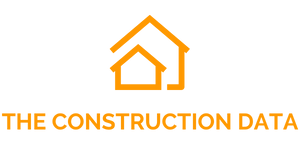
Smart Homes Fuel Electric Roller Shutter Market, But Costs Remain a Challeng
Electric Roller Shutter Market Research Report 2025–2030, provides a comprehensive overview of one of the most dynamic segments in the global building automation and security solutions industry. The report highlights that the market is expected to grow at a compound annual growth rate (CAGR) of 5.43% between 2024 and 2030, underscoring the increasing adoption of electric roller shutters across residential, commercial, and industrial applications.
Market Overview
The global electric roller shutter market is marked by high levels of competition, with both established international players and numerous regional vendors vying for market share. Unlike markets dominated by a handful of global leaders, the electric roller shutter industry remains fragmented, which encourages innovation and diversification of product offerings.
Vendors are increasingly focusing on unique value propositions, refining their product portfolios to meet evolving consumer expectations. Customers are seeking shutters that are not only secure and efficient but also lightweight, compact, and aesthetically compatible with modern architecture. Companies such as Mecho have already developed specialized roller shutters capable of harnessing solar energy, signaling how innovation can expand product functionality and add to sustainability goals.
The competitive environment ensures that product innovation, technological integration, and value-added services remain critical differentiators. Vendors compete primarily on parameters such as quality, design, advanced features, reliability, after-sales service, and pricing.
Adoption and Regional Dynamics
North America
As of 2024, North America leads the global market, accounting for more than 33% of total market share. Growth in this region is supported by robust investments in infrastructure modernization and widespread adoption of smart home technologies. The U.S. and Canada remain the two dominant contributors, driven by demand from both residential and commercial end-users.
The integration of roller shutters into smart home ecosystems is gaining traction, with homeowners increasingly adopting solutions that can be controlled via mobile applications or through voice assistants such as Amazon Alexa and Google Assistant.
Europe
In Europe, several cities are undertaking large-scale building renovations and energy retrofitting projects, fueled by sustainability policies and energy efficiency directives. The continent’s focus on green building standards is creating demand for energy-efficient shutters that improve insulation while providing convenience. Moreover, the rising popularity of connected living across urban centers is accelerating adoption.
Asia-Pacific (APAC)
APAC represents the fastest-growing regional market, projected to grow at a CAGR of 6% through 2030. This growth is primarily driven by strong economic expansion, rapid urbanization, and increased construction activity in countries such as China, India, South Korea, Japan, and Australia. Rising disposable incomes and growing consumer awareness of automation and energy efficiency are also significant contributors.
Latin America, Middle East, and Africa
Emerging urban centers in Latin America are witnessing rapid growth in residential complexes, office spaces, and retail infrastructure. Similarly, parts of the Middle East and Africa are adopting modern building technologies, especially in premium residential and commercial projects, though adoption remains comparatively slower due to affordability constraints.
Key Market Trends
1. Rise of Smart Home Integration
The most significant trend shaping the electric roller shutter market is the integration of smart technologies. Modern shutters can now be linked to mobile apps, central control systems, and virtual assistants, giving users seamless remote access and automation capabilities. Leading manufacturers such as Somfy are pioneering shutters compatible with Apple HomeKit, Google Assistant, and Alexa.
2. Demand for Customization and Aesthetics
As roller shutters move beyond their traditional utilitarian role, design and customization have emerged as major decision factors for buyers. Consumers want shutters that blend with architectural styles, available in various finishes, materials, and colors, making aesthetics as important as functionality.
3. Growth in Industrial and E-Commerce Applications
The rise of e-commerce and logistics hubs is fueling demand for electric roller shutters in industrial and commercial settings. Warehouses, distribution centers, and fulfillment facilities require secure, fast, and durable shutter systems to manage high traffic volumes efficiently. This industrial adoption is creating a significant opportunity for manufacturers.
Growth Drivers
Several forces are propelling the market forward:
- Security and Privacy Concerns: As businesses and homeowners prioritize safety, the demand for automated shutters offering robust security has surged.
- Urbanization and Infrastructure Growth: Rapid construction of residential complexes, office spaces, and industrial units in both developed and developing economies continues to boost demand.

- Industrial Automation: Manufacturing and automotive facilities are increasingly turning to electric shutters to manage large-scale traffic and secure their premises.
- EV and Automotive Growth: With rising investment in electric vehicle manufacturing and industrial automation, the requirement for reliable shutter systems is expected to grow further.
Industry Restraints
Despite promising growth, the industry faces several challenges:
- High Installation Costs: Advanced electric roller shutters involve specialized motors, control systems, and automation features, making them cost-prohibitive for price-sensitive markets.
- Lack of Standardization: Differences in designs, control protocols, and installation methods across manufacturers cause compatibility issues, especially when integrating shutters into smart home platforms or building management systems (BMS).
- Limited Adoption in Developing Nations: Penetration remains low in underdeveloped markets, where affordability and awareness continue to be barriers.
Impact of Tariffs and Supply Chain Challenges
The global supply chain for electric roller shutters is heavily dependent on China for raw materials. Tariffs on imported components have disrupted supply chains and increased costs, especially in the U.S. market. Higher production costs translate into increased retail prices, slowing adoption in certain regions.
- United States: Most affected due to reliance on Chinese imports.
- Europe: Less exposed to direct tariff impacts, but secondary effects cause price fluctuations.
- APAC: Faces rising costs when importing raw materials from China, which could suppress consumer demand.
- Latin America & Middle East: Comparatively less impacted, though still vulnerable to global supply disruptions.
the global electric roller shutter market is expected to continue its upward trajectory through 2030. Vendors that successfully address cost challenges, standardization issues, and evolving consumer preferences will be best positioned for long-term success.
Key areas of opportunity include:
- Integration with Renewable Energy: Solar-powered shutters and energy-efficient models will attract environmentally conscious buyers.
- Expansion in APAC and Latin America: Fast-growing economies will remain lucrative markets for vendors willing to offer affordable, scalable solutions.
- Industrial Automation and Logistics: With global trade and e-commerce expanding, the industrial sector’s demand for automated shutters will rise sharply.
- Design-Driven Consumer Demand: Manufacturers offering customizable, aesthetically appealing shutters will capture premium residential and commercial markets.
The electric roller shutter market is evolving beyond its traditional role as a simple security solution into a smart, design-driven, and energy-efficient product category. With strong growth prospects across North America, Europe, and especially APAC, the industry offers significant opportunities for both established global players and emerging local vendors.
While installation costs, supply chain challenges, and lack of standardization remain barriers, the overarching growth drivers — urbanization, smart home adoption, and industrial automation — will outweigh these challenges. By 2030, the market will not only be larger but also more technologically advanced, integrated, and diverse in its offerings, ensuring its continued relevance in the global construction and automation ecosystem.




